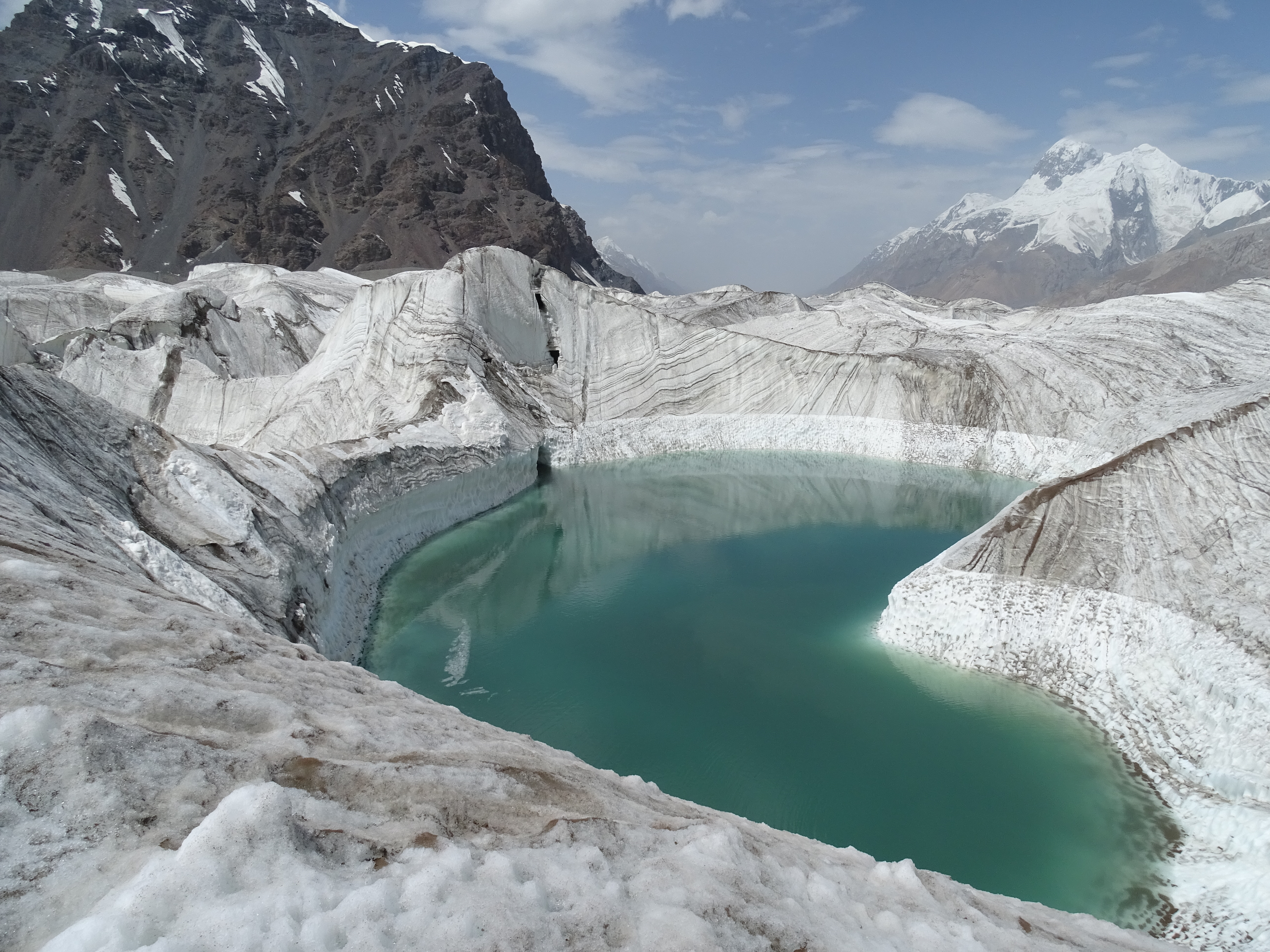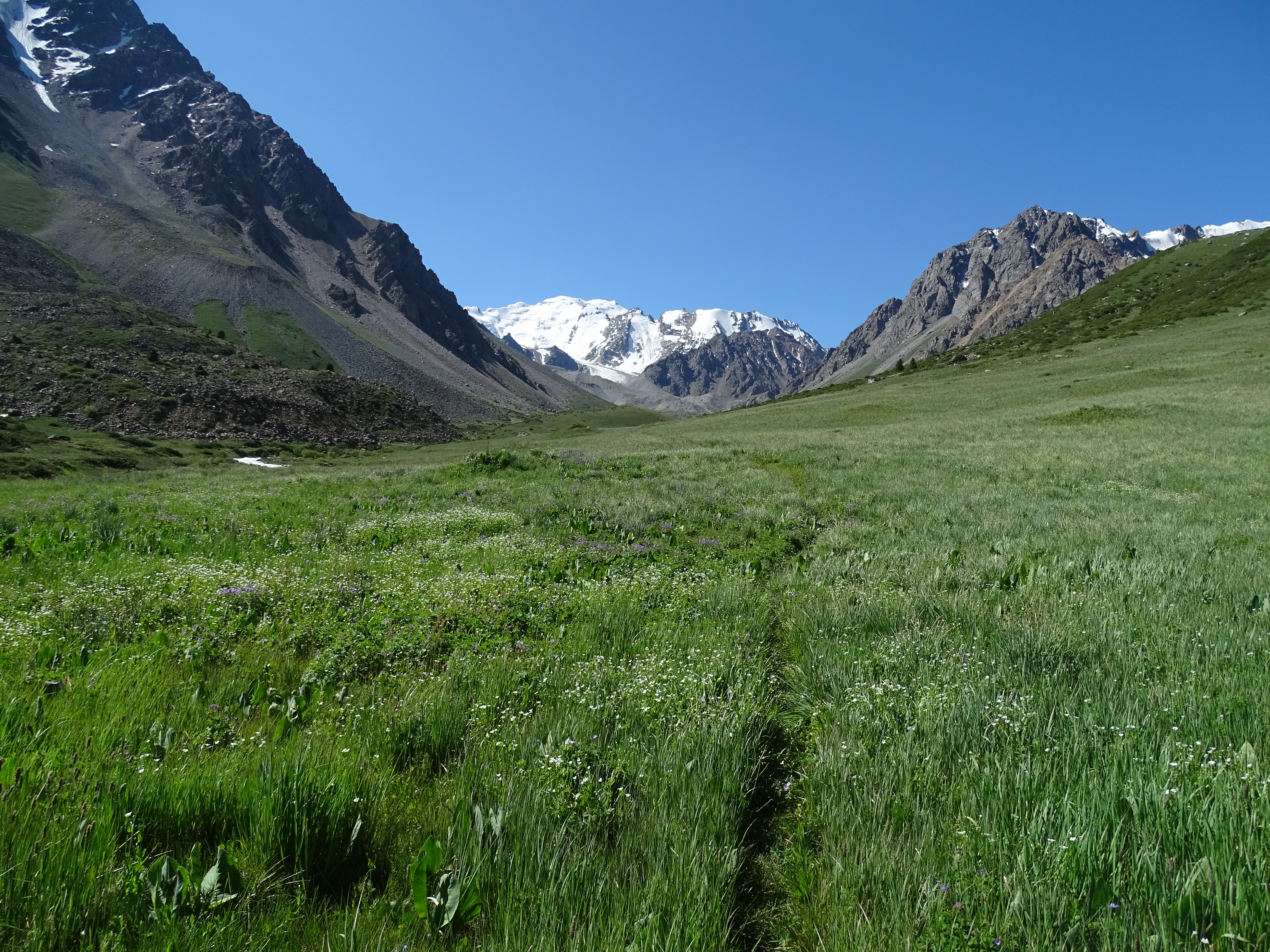From begin of July until the middle of September 2015 I traveled through the Central Asia. With 2.5 months it was my longest journey at all. The main reason for this
prolongation was visiting 4 different countries at once (Kazakhstan, Kyrgyzstan, Tajikistan and Uzbekistan), where usually I try to constrain my voyage to only
one country to see there all interesting places.
Traveling through 4 countries had unfortunately some disadvantages. Some of the countries are very big, so I was forced to book 3 domestic flies, something I normally try to avoid. The other reason for
taking planes were the bad road conditions. Steep and narrow mountain roads climbing to high passes and a lot of potholes allowed only very slow car
movement. Not seldom driving a distance of 300 km took the whole day. Because of the bad relationships between the countries of the central Asia there
were only few border crossings for the citizens of those countries, and even fewer for foreigners. To cross the boundary I was forced to visit regions and
stay in the cities I was not interested in. All this was very time-consuming.
Despite of such transport difficulties the decision to visit 4 countries at once was in retrospect the right one. Some countries like Kazakhstan or Uzbekistan
have for me not enough mountains, to spend there the whole journey. The most regions of mountainous countries Kyrgyzstan and Tajikistan are lacking the even
basic trekking infrastructure and/or are very difficult and thus expensive to rich.
|
Unfortunately the Central Asia is still a difficult trekking area. Not only, that the trails are not marked, there are confusingly many of them in the
mountains, created by herdsmen and their animals. Especially carrying big and heavy backpack it is annoying when you choose the wrong trail and are forced
to go back loosing a lot of time and energy. Sometimes it was possible to ask the local herdsmen for the way, if you can speak Russian, but they weren't
always there, when you need them. There were no maps of the trekking areas available and if you could buy one, than it has the scale of 1:100,000 or higher.
Such maps are no more suitable for path finding. Other infrastructure like mountain huts was missing too. In some areas it could be possible to stay overnight in the yurts of
local people, but generally you have to carry your own tent and food. Because the high picks are covered with ice they aren't accessible for trekker,
unless you carry the whole glacier equipment. Instead, almost all passes were about 4,000 m high.
The countries of Central Asia were traditional the stomping ground for the mountaineers of the Soviet Union, because here were the highest picks of the
country. The alpinists from the former Soviet Union are here still in the majority, but more and more Western climbers discover the mountains of
the Central Asia. Nevertheless the absolute number of the mountaineers decreased comparing to the time of the Soviet Union, because the descent of the
alpinist count from the former Soviet Union could not be compensated by the mountaineers from other parts of the world. The main reasons for this decrease is the concurrency of
even higher Himalaya mountains and the general increase of the costs for climbing the mountains due to the lack of the former socialistic government grants.
|

Please click on the photo above to see the short travel report.
|

Please click on the photo above to see the long travel report.
|
The economic wealth is uneven distributed in the countries of Central Asia. The differences are visible in the road conditions, in the townscapes
and the nature conservation. Whereas the oil reach Kazakhstan can afford to build completely new capital city,
are big parts of the population of the other countries forced to look for work in Moscow or other big Russian cities. But despite of the huge unemployment
the roads are constructed by Chinese companies and in Tajikistan the gold mines are operated by Chinese too. All the countries of Central Asia are
ruled by dictators, with the exception of Kyrgyzstan, where national uprisings precluded until now the establishment of the dictatorship. Uzbekistan is
even a police state with exorbitant many controls. By border crossing to Uzbekistan you are forced to log in into your smartphone or laptop to allow
the customs official searching your device for pornographic content. The touristic potential of Central Asia is huge, historical and cultural as well as
a natural (mountains, lakes, steppes, deserts: all close to each other). But unfortunately the touristic chances are not seized, especially because of the
lack of investments. The other problem is the environment protection, which is only good in rich Kazakhstan. In other countries domestic animals are often
seen grazing in national park. In Tajikistan, the poorest central asian country, the government even allows settlement in protected areas, which inevitable
leads to poaching and forest destruction.
The prevailing religion in Central Asia is the islam, but his interpretation is very liberal. Drinking alcohol for example is quite common in all countries,
by the men in Kyrgyzstan not seldom on the edge to alcoholism. There are some foreign forces trying to strengthen the religiousness of the people. Saudi
Arabia e.g. is funding the building of mosques in villages in Kyrgyzstan. There were even few cases of violent islamic extremism in Uzbekistan und Tajikistan.
But the overwhelming majority of the people in Central Asia are very hospitable to foreigners. All countries are very safe: there no theft or any violence
against the tourists.
|
|
Central Asia has a lot to offer for the tourists. Here are located the second (Pamir) and third (Tian Shan) highest mountains in the world. Situated in the
middle of the continent the history of this area goes back 3000 years or more. The marks of this long history are still visible in many places around the
Central Asia. For these reasons is Central Asia a very attractive travel destination. But unfortunately it is a very difficult to travel too, especially for
individual travelers moving outside of the big cities and when they can't speak Russian. For the individual trekkers the main problem is the orientation
in the mountains because of the lack of maps and marked trails. But the things are improving slowly. New, better roads are built and in the cities grows
the offer and the quality of accommodation facilities constantly. Central Asia hat it in itself to get one of the most popular trekking destinations in the
world. What is needed are only small investments to improve the trails quality, especially their markings, and to strengthen the nature protection.
|


